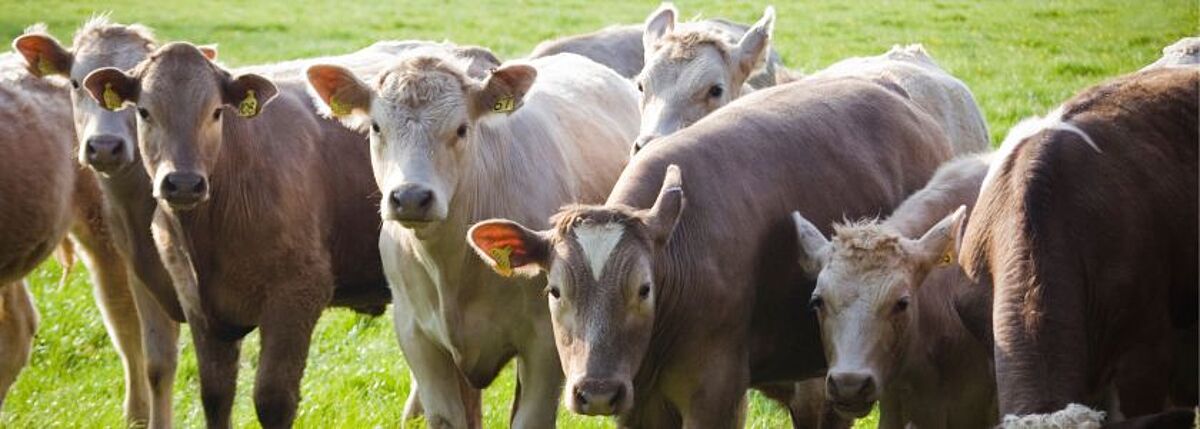Is bovine viral diarrhea set to be a thing of the past?

The takeaway: A team of researchers recently collaborated to produce a gene-edited calf with resistance to bovine viral diarrhea virus—a deadly affliction that can claim animals and saddles producers with low birth rates and dead calves. Although a vaccine against bovine viral diarrhea (BVD) has been available now for more than a half-century, it is not always effective in stopping transmission of the virus.
Cattle producers around the world are forced to contend with many challenges—and among the most vexing is a virus called bovine viral diarrhea virus (BVDV).
This virus, which is found in most cattle raising regions around the world, generally spreads through direct contact with other infected animals, though spread may also occur through indirect methods such as contact with contaminated needles and contaminated equipment. This single-stranded positive sense RNA virus has been called one of the most significant cattle diseases in the world, though prevalence rates vary. Economic tolls for producers can be significant, as infection can lead to decreased fertility, lowered milk production, slow fetal growth, various respiratory symptoms, spontaneous abortion, fetal mummification and stillbirth, and death.
Once infected, cattle have an incubation period of three to five days. In virulent strains, cattle have high fevers, mouth ulcers, pneumonia, and diarrhea. Notably, when calves are infected as fetuses, they can become persistently infected for their entire life, continuously re-infecting other animals in the herd as long as they are present.
Vaccines for the virus have been available for decades and are an important part of any herd prevention program. Modified live vaccines stimulate the entire immune system, while BVD vaccines with inactive cells may be used against all open and pregnant animals. While the vaccines are not 100% effective, timing of the vaccine administration can often significantly contribute to these rates. Further, new additions to any herd may simply reintroduce the virus.
CRISPR technology focuses on a specific cellular receptor
According to a study published in PNAS Nexus, CRISPR gene editing technology may finally provide a solution to this vexing problem. A research team from the University of Nebraska and the U.S. Department of Agriculture’s Agricultural Research Service built on previous studies that discovered the main cellular receptor and the area where the virus binds to that receptor—which leads to infection.
CD46 is the main receptor that lays the path BVDV infection. Binding of the BVDV to CD46 receptor enables the virus to enter the cells and cause the disease. In theory, blocking the interaction between the virus and the CD46 receptor should prevent the entry of the virus into the cells and limit symptoms of the virus. The use of CRISPR to generate a knockout for CD46 in cattle was first described in 2020 by a team of German researchers. Their approach disrupted the CD46 function completely. However, in Nebraska, researchers used CRISPR to alter CD46 so it would not bind the virus yet still keep all the other normal bovine functions that it is needed for.
The idea was tested in a cell culture and, once shown to be promising, the skin cells of cattle were edited to develop embryos carrying the altered gene, the same method used to create the first ever cloned animal, Dolly. The embryos were then implanted into a surrogate cow. In the summer of 2021, Ginger was born.
Ginger, a white calf with big floppy ears, was kept under close watch for several months, then exposed to the virus by being bunked with a dairy calf determined to be infected with bovine viral diarrhea virus. Upon testing after, Ginger’s cells showed reduced susceptibility to bovine viral diarrhea virus, and she had no observable adverse symptoms or effects.
Researchers called Ginger a “proof-of-concept animal,” saying she showed the first evidence that purposeful gene editing in CD46 can chip away at the effects that bovine viral diarrhea virus has on cattle operations around the world.
“Stepwise experiments showed that substituting A82LPTFS87 in CD46 dramatically reduced BVDV susceptibility in vitro, ex vivo, and in a natural challenge study with one edited calf,” researchers wrote. “The results provide proof-of-concept for using intentional genome alterations in CD46 to reduce the burden of BVDV-associated diseases in cattle. However, determining the ability of CD46-edited animals to withstand BVDV viral challenges in vivo will require experimental replication in other breeds and with more animals.”
Researchers note that one calf—cute though she may be—does not a CRISPR movement make, and that there is much work to be done in future studies with more animals, more samples, and more varied conditions.
by Jeff Schmerker - IDT
Supplier

IDT - Integrated DNA Technologies
With over 30 years experience as a manufacturer, IDT offers innovative tools for NGS, CRISPR, qPCR and PCR. IDT offers superior quality DNA and RNA oligos, genes, gene fragments, Cas nucleases and more, with fast turnaround times!
About IDT Shop for IDT products
